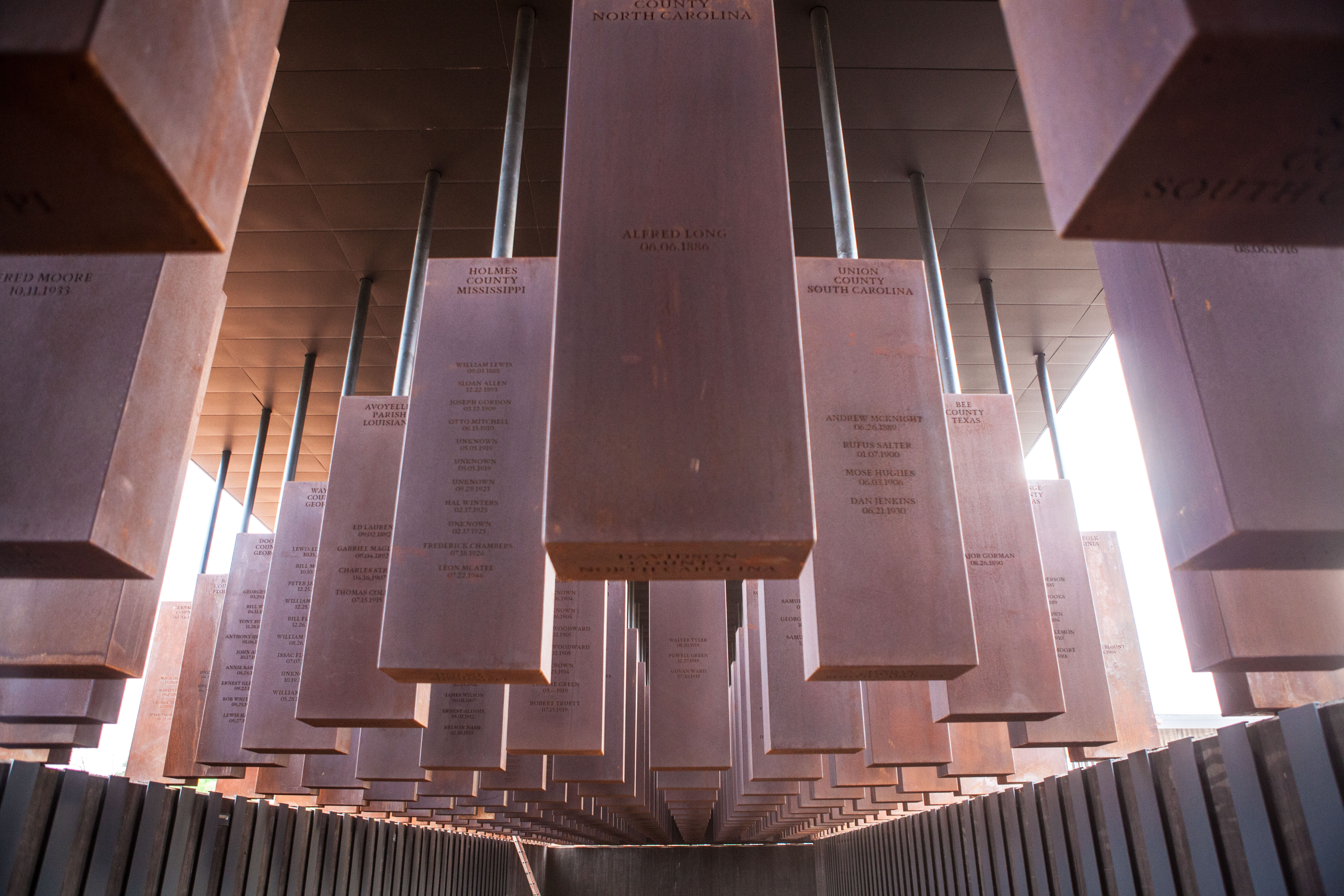When I learned about the National Memorial for Peace and Justice, the new memorial to lynching victims in Montgomery, my mind went back to a Jewish cultural event I attended a few years ago. There, a woman turned to me in anger after hearing a filmmaker compare the current Syrian refugee crisis and the Jewish refugee crisis during World War II. The woman made a dismissive gesture with her hands. No trauma could come close to Jewish trauma, she seemed to say. To compare the two – indeed, to heed the lesson of our history at all – to her was tantamount to diminishing the Holocaust.
The film was about Otto Frank’s failed attempt to secure American visas for his family, the end of which story we all know well. In the news, every day, were photos of Syrian families huddled on rafts and stories of European heads of state wringing their hands over the decision to let more stateless people across their borders. Looking at such images, reading such stories: If we couldn’t see in them the reincarnation of the history we held so close, hadn’t our Holocaust education failed?
Reports on the design of Alabama’s new memorial — inspired in part by Berlin’s Holocaust memorial and the Apartheid Museum in Johannesburg — have noted the striking steel pillars suspended from a roof, marked with names of victims alongside the county where their death occurred. Visitors from those counties are invited to take home an identical replica of “their” pillar, to start a conversation at home about their counties’ difficult histories. Over time, writes Architectural Digest, gaps in the display of replica pillars will reveal who has accepted the challenge to face history, and who has not.
I’d also like to see this challenge extended to Jews and Jewish institutions: to talk about, write about, and visit a memorial that embodies the lessons we say we’ve been trying to teach about mass murder and trauma for more than 70 years. Jews know the particular power of a list of named victims — after all, we read them aloud every year on Yom HaShoah (Holocaust Remembrance Day). We know the haunting emotional weight that accumulates after reading or listening to name after name of strangers who could very well be distantly related to us. Anyone who has emerged, disoriented and gutted, from the darkness of the children’s memorial at Yad Vashem, Israel’s Holocaust museum, can confirm that just hearing a name is often enough to feel a victim’s humanity, to make her absence palpable.
Though the lesson that a name stands for a person, and thus six million names stand for six million people, should gather us around the lists of victims killed around the world, too often it brings us back only, tribally, to our particular lists of the dead. We repeat the names on these lists, tell and retell the stories we know. Telling these stories can do a lot of important work: to complicate the experiences of survivors, rejecting the idea of a “normal” survival; to remind us of the dead’s individuality and humanity, with their own wills, thoughts, regrets, and memories.
But as Alexandra Zapruder points out in her introduction to Salvaged Pages, the essential collection of youth diaries of the Holocaust, we can also tell those stories in dangerous ways. A byproduct of these narrative habits is often the essentialism of Jewish victimhood, which both suggests that Jews are not much more than victims and also that anyone else’s victimhood is occasional, incidental, not as bad.
Yes, we know how to face our own history — to tell the stories, to say the names, to remember — but we must be able to do the same for other groups of sufferers, especially those still under persecution today.
Many Jewish immigrants came to America with few reasons to believe that their rights were anything but provisional. Even with the rise of anti-Semitism, the generations that followed have, for the most part, come to believe with relative confidence that belonging to our country means that our rights are inalienable. Black Americans have not yet had a generation that can take that privilege for granted.
We can also look to memorial projects like this one to remind our communities that black and Jewish fates once seemed bound up in each other. Rabbi Abraham Joshua Heschel famously marched with Martin Luther King, Jr. in Selma, inspired by his theology and by his experience as an immigrant. In the era of Leo Frank and college quotas, other Jewish leaders knew that better conditions for blacks meant better conditions for Jews. Yet now, our cooperation in the struggle for black lives seems to take on a less urgent tone, because our own lives — at least those of white Jews — no longer appear implicated.
For this reason most crucially, Jews and Jewish institutions must lift up black American projects of memory. To call for our own people to respond to a memorial like the one in Montgomery is to remind our communities of that interconnected urgency, not so long past. It’s also a way to broaden the hallmarks of our remembrance, to make the list of names pronounced annually longer, to make “never again” mean more than “never again to my people.”
Our own lists of names don’t stand on their own — they provoke stories and conversations. Let’s allow these names, too, to reveal the ways in which our histories are entangled with those of our fellow Americans. They should make us ask whether we are taking seriously the legacy of our own trauma, and fighting against any narrative that erases human life or reduces it to mere victimhood.



